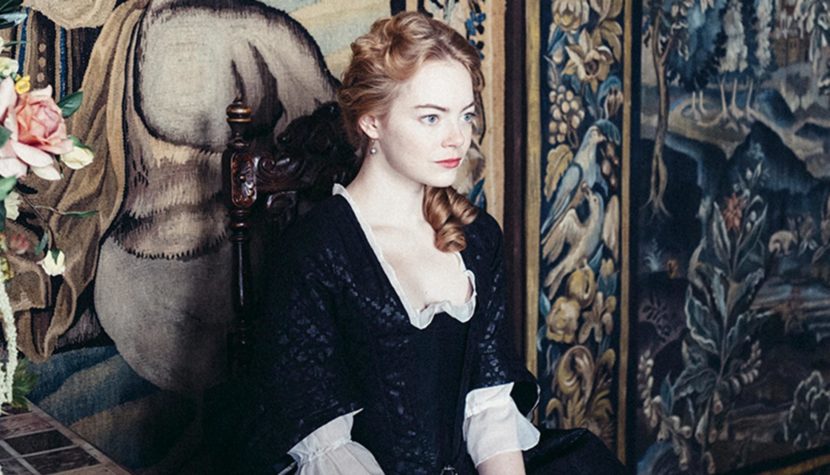THE FAVOURITE. An overt, visual perversion

Yorgos Lanthimos is always interested in the same themes: power, distorted love, an image of the world that is only seemingly true. Those who until now remained skeptics of his work can finally see a new quality in his cinema. However, fans of this creator should not be disappointed either – Lanthimos retains its slightly strange, but magnetic style, and finally has an idea how to develop it.
Lanthimos left his native Greece in the glory of fame as one of the most important European directors and a man without whom there would probably be no famous Greek New Wave. From the moment his name became known to a wider audience on the occasion of the Oscar nomination for Fang, it was burdened with the mark of genius. Lanthimos shocked with brutal violence, grotesque exposing of the laws that govern the world, a degeneration deeply hidden in people, which only reveals itself in the twilight. Even if at some point the boundless adoration of fans of art-house cinema was called into question (especially after The Killing of the Sacred Deer, which was received a little cooler than the award-winning Lobster), one thing remained unchanged: he was and remains an uncompromising artist. Equally original is his latest film, The Favourite.
Why dwell on the past? The Favourite is a film that, on the one hand, fits perfectly into the work of Lanthimos, on the other – showing that he can do much more than just reuse his own characteristic motifs, although this time the director did not put his hand to the script.

Related:
The Favourite is the story of three women set in 18th century England at war with France. However, more than political matters, Queen Anne is interested in court life – not out of calculation, but pure, human smallness, putting what is close in the hierarchy above the enigmatic good of her subjects. In her name, Lady Sarah rules more, unquestionably the most important person at court, not only a typical queen’s courtier, but also her confidante and friend. The current order is disrupted by the arrival of Abigail. Despite her noble roots and her intercession, the girl is treated as an unwanted intruder and only gradually, with the development of events, she climbs up the court hierarchy towards the footstool of the ruler.
Behind-the-scenes games for the favor of the ruler are nothing new; especially if sex and gossip are their most powerful currency. However, in the lens of Lanthimos, the court intrigues exceed epochal conventions. What is extremely human is intertwined with what is most imperfect and clumsy. I think that the image of a ruler created by Olivia Colman will remain in the history of cinematography for many years. Queen Anne in her performance is a person both lost and tired of responsibility, as well as resolute, another great woman with the British crown on her head. Her progressive physical illness intensifies her mental breakdown. Thirsty for love, but also unable to be loved fully, she was sensitive to her own obsessions and sometimes overly lenient towards the faults of others.

Queen Anne, however, is not alone. She is co-starred by the outstanding Rachel Weisz (Lady Sarah) and Emma Stone (Abigail). Initially, their relationship could be shortened to a parable about Cinderella, who consistently and independently fulfills her dream to take her rightful place. Or maybe he becomes even worse than his tormentors? But that’s too easy for Lanthimos. She entangles her characters in a web of dependencies and feelings in which no one is categorically innocent or wronged. The ambiguity of characters makes the characters of The Favorite as magnetizing as repulsive. Lanthimos, on the other hand, has taken his acting to a new level. His former love of theatricality, artificiality, some fetish of mannerism now perfectly fit to describe the world dressed in corsets and wigs.
Playing with culturally rooted images of history is also nothing too revealing. Those who fell in love with Marie Antoinette by Coppola for her brutally honest look at the era will find themselves all the more in the world of Queen Anne. The director constantly maneuvers between baroque grandeur and nonsense. He charms and treats the viewer with sophisticated shots of chambers, corridors and offices, and at the same time he can be cruel to the mentality of the courtiers. If today the minuet seems to be just a bizarre dance, Lanthimos understands it as a caricature gallery of bizarre figures, and this is just one example. Fortunately, it is not a pathological contrast between what is known to the viewer and the director’s eccentric imagination. The film is full of linguistic and visual flavors, ambiguous dialogues, furtive glances and overt visual perversion. At the same time, it retains its atmosphere and defends itself as a baroque version of the parable about the irrational lust for power and the resulting weakness.





